Pie Fights
It's no secret that I love the color pie. It's the foundation that both the mechanics and flavor of Magic are built upon. Last summer, I wrote a series of five articles where I revisited the color philosophies (white, blue, black, red, and green).
Today, I'm going to be examining the five colors in a different light. I'm going to look at the five basic conflicts of the color pie. I'll not only explain what the conflicts are but how they overlap with one another.
Before I get to the conflicts, let me first quickly review the philosophies of each of the five colors (taken from the articles I've linked to above).
White

White wants peace.
White looks around and sees a world of suffering. There are so many individuals that struggle day to day, but the world has the resources to address this suffering. There is enough for everyone to have what they need (as opposed to what they want). Suffering is a by-product of individuals not prioritizing the good of the group.
White wants to create a world where there is no unnecessary suffering, a world where life is as good as it can be for each individual. The key to making this happen is teaching individuals the importance of taking actions that benefit the group as a whole, even if those actions might not benefit them personally.
The problem with this plan is it can only succeed if everyone is working toward the same unified goal. As soon as some individuals prioritize other things, like say their own desires, the plan falls apart. This means that white has to work extra hard to get the group to understand the power it holds and to keep the focus on the bigger picture.
White does want as many as possible to understand its motives and share them. But white realizes that to accomplish its larger goal, some individuals will have to be lead down the path rather than venture there of their own accord.
Blue

Blue wants perfection.
Blue believes that each and every one of us is born a blank slate with the potential to become anything. The entire point of life is figuring out what you could achieve with the right education, experience, and tools. Note that this is not a task with an end goal, but one that continues throughout your life. There will always be things you can do to improve, change, or adapt. The journey of life is one of constant discovery as you keep seeking to better yourself.
For individuals to do this, there has to be a society that accepts and encourages this behavior. Opportunities for education are vital. Places to experience things through trial and error are mandatory. Access to the top-of-the-line tools must be a right of every citizen.
In addition, this way of living requires the right attitude. You have to be open to possibilities, but also not too hasty in action. Blue recognizes that there are many forces, even some that come from within, that lead an individual astray. Time is a valuable resource because only with time can one get the things they need to improve. This means that individuals need to be careful and deliberate in all their decision making. It is better to think one's options out carefully and select correctly than to rush to a decision.
Blue is methodical and exact. Because when one sets out to become the best individual they can be, one doesn't have the luxury of making mistakes. Well, not unless they occur within a controlled environment.
Much as blue wishes to perfect itself, it also wants to perfect the world it lives in. Part of this is to ensure that blue has access to the resources it needs, but part of it is the belief that an element of reaching one's potential is living within a world that has reached its own potential. As such, blue is the color most interested in technology and wants the latest and greatest version of whatever it is using.
Black

Black wants power.
Black looks at all the other colors and feels that each of them sees the world as they wish it to be. Black is the only realist, the only color to look and see the world as it is. An individual is free to have whatever they want, provided they have the power to obtain and keep it. This makes power the most important resource, because it's the one thing that can guarantee your ability to control your life and thus your happiness.
It's important for everyone to understand that black didn't make the world greedy. The world was already greedy; black has just learned how to thrive within it. Black has two big things on its side. One, it understands and accepts the system better than anyone else. And two, black doesn't place any restrictions on itself that make its success more difficult.
Black's philosophy is very simple: There's no one better suited to look after your own interests than you. Therefore, if everyone looks out after their own interests, you've created a system where everyone has someone looking out for them. In addition, black's system allows everyone the opportunity to succeed. Will everyone succeed? Of course not—but once again, that's not black's doing. That's just how the world works.
The weak will fail. That's what makes them the weak. Doing anything to help them is both prolonging the inevitable and risking failing alongside them. It's not personal to black. Black does what it needs to do to succeed. If others can't do the same, well, then they deserve their fate. Others see this as black being heartless, but black realizes it's just being pragmatic.
There will always be those who suffer. Once again, this isn't black's doing. It's an inevitability of life. Black's just the one color that owns up to the truth and acts accordingly.
Red

Red wants freedom.
Everyone seems preoccupied with the meaning of life. Red's not, because red already knows the answer. You see, your heart tells you what it needs to be fulfilled. All you have to do is listen to it and act accordingly. It's not a mystery. You are literally bombarded with constant feelings that guide you down the correct path. The problem is all the other colors ignore the message.
Life's an adventure, and it's up to each individual to experience it. The key is to embrace your emotions and let them guide you. If you're happy, laugh. If you're sad, cry. If you're angry, hit something. If you're scared, run away. Listen to your inner voice and you will have the opportunity to experience all that life has to offer.
Too many individuals live their life questioning choices they've made. Not red. Red lives in the moment; red is spontaneous; red embraces every adventure put before it. Red knows that on its deathbed, it will look back on a fulfilled life with no regrets. That's all red wants—the ability to live life doing what it needs to.
This doesn't mean red is alone. Quite the opposite actually. Part of living life is embracing relationships. Red knows passion and loyalty and camaraderie and lust. When red bonds with another, it bonds strongly and fiercely. Whether a lover or a friend, red is someone who will always be there when you need them. Well, unless life has taken them somewhere else for some length of time—but then when they get back, they're definitely going to be there for you.
To outsiders, red might seem a bit chaotic; that's only because others can't see what's in red's heart. They cannot feel red's emotions guiding them. Living life to its fullest takes a lot of dedication and perseverance, but red is always up to the task.
Green

Green wants acceptance.
The other colors are all focused on how they'd change the world to make it better. Green is the one color that doesn't want to change the world because green is convinced that the world already got everything right. The natural order is a thing of beauty and has all the answers to life's problems. The key is learning to sit back and recognize what is right in front of you.
Each individual is born with all the potential they need. The secret to a happy life is to recognize the role you were born into and then embrace it. Do what you were destined to do. The world is this elaborate system, and each one of us gets to play a part. And it's not something we have to guess about; it's imprinted on us; it's in our genes. Just look within.
In addition, you have to learn how you fit into the larger picture. Nature has a beautiful structure. Part of life is recognizing what role you play and how that role interconnects with the web of life. You're not alone. You're part of a complex system full of interdependencies.
The problem is there's so much going on that it's easy to lose track of what's already there. Too many individuals get so caught up in the details of their lives that they don't bother to sit back and understand the bigger picture. Green truly believes that the rest of the colors simply aren't taking the time to appreciate what is already there.
Prose and Conflict
If you've ever looked at the back of a Magic card, you've seen this circle, aka the color wheel.
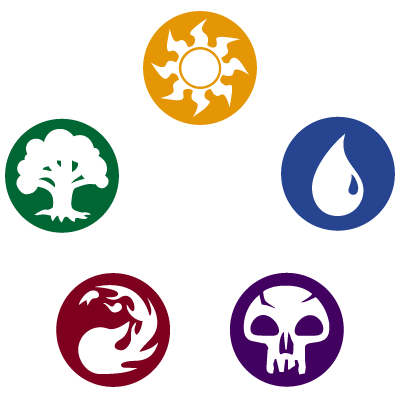
Colors are allied with the two colors on either side of them, and are enemies with the colors across from them. Now that we've examined each of the colors separately, let's look at what happens when we match up colors with their enemy. As you will see, five conflicts arise.
The Good of the Group vs. The Good of the Individual (White vs. Black)

White believes in morality, that there are absolute truths about the concepts of right and wrong. One of these truths is that a society needs to look out for its weakest members; it's not okay for one person to gorge themselves while another is starving. As such, it's key that the structure of society be made to maximize protecting those who most need the help.
Black believes it's important to motivate people to want to do well. Give everyone access to opportunity and then allow those who put in the work to reap the rewards. If one person puts in the time and energy to create excellence, why should they be given the same thing as someone who didn't even bother to try? If you want people to shine, you need to properly motivate them.
In short, this is the classic battle of the good of the group versus the good of the individual. Should a society minimize pain or maximize motivation? Which is more important—charity or merit? Is allowing people to fail a great injustice or an important teaching opportunity? Are we as a society judged by how we treat our weakest member or how we reward our strongest?
To white, this is an issue of social responsibility, of looking out for the welfare of all. White thinks of black as immoral, caring only about selfish concerns. White sees this conflict as that of good versus evil.
To black, this is an issue of personal responsibility, of creating a system that pushes people to be their best. Black thinks of white as enabling the weak, keeping them victims rather than trying to encourage them to improve. Black sees this conflict as encouragement versus coddling.
At its core, this conflict is about how individuals prioritize the decisions they make.
Head vs. Heart (Blue vs. Red)
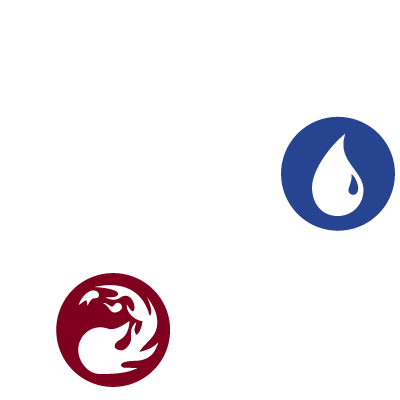
Blue believes in the power of intellect. Improving oneself requires mental fortitude. You need to be mindful, focused, careful, and patient. Each step must be meticulously managed to ensure that you are always advancing in the right direction toward your ultimate goal. Listen to your head, for it will always guide you down the correct path.
Red believes in the power of emotion. Your body speaks to you, and it's crucial that you not only listen but act spontaneously and with passion. The key to happiness is listening to your gut and never having to live with the regret of not chasing your dreams. Follow your heart, for it will always guide you down the correct path.
In short, this is the classic battle of the head versus the heart. Do you listen to your intellect or your emotions? Are you guided by what you think or how you feel? Should you act with caution or abandon? Which will guarantee more happiness: carefully executed logic or passionately followed impulses?
To blue, this is an issue of taking the time to get the details of your life correct. Blue thinks of red as needlessly brash and dangerously negligent. Blue sees this conflict as carefulness versus recklessness.
To red, this is an issue of understanding and acting on the things that matter most to you. Red thinks of blue as cold and detached. Red sees this conflict as passion versus indifference.
At its core, this conflict is about how we live our lives.
Free Will vs. Destiny (Black vs. Green)
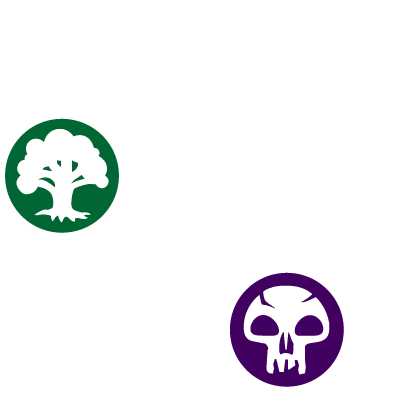
Black believes that you are responsible for creating the opportunities that advance you in life. There is no obstacle that cannot be overcome if you are willing to do what is necessary. The key is understanding the power you have within you to bring about change.
Green believes that the path you take in life is predetermined; you have a role to fill that you were born for. Your job is to figure out what exactly that path is, embrace it, and then dutifully fulfill that role. There will be distractions in life that will lead you astray, but you need to have the fortitude to keep returning to your destiny.
In short, this is the classic battle of free will versus destiny. How much control do you have over the outcome of your life? Is each choice you make your own or is it part of some larger plan? Can you change what life has planned for you or is the path already mapped out?
To black, this is an issue of having the strength to recognize that you control your future. Black thinks of green as a fool who believes in things that don't actually exist. Black sees this conflict as opportunity versus superstition.
To green, this is an issue of accepting the patterns inherent in the world. Green thinks of black as a cynic that can't see the truth in front of them. Green sees this conflict as truth versus skepticism.
At its core, this conflict is about the role you play in your life.
Freedom vs. Security (Red vs. White)

Red believes that the goal of life is for each person to find their own passion by following their impulses.
To be able to do this, they need to live in a society that prioritizes the needs of the individual to explore whichever path they choose to walk down. It needs to be a world free of restrictions and limitations.
White wants to create a world that maximizes the happiness of the group. A key part of accomplishing this is making sure that everyone is safe and secure. To do this, there must be rules and regulations that ensure individuals don't selfishly endanger the group.
In short, this is the classic battle of freedom versus security. What's best for a society? A world in which people are free to act or one in which they are free from harm? Do we prioritize the individual's ability to do what they want or a society's ability to best protect itself? Is a seat belt law curtailing liberties or saving lives? How much personal freedom is worth societal protection?
To red, this is an issue of whether or not others get to tell you how to live your life. Red thinks of white as a dictator unfairly enforcing its will. Red sees this conflict as democracy versus fascism.
To white, this is an issue of social responsibility, of looking out for the greater welfare. White sees red as someone embracing anarchy and endangering society. White sees this conflict as order versus chaos.
At its core, this conflict is about what is best for how we govern ourselves.
Nature vs. Nurture (Green vs. Blue)
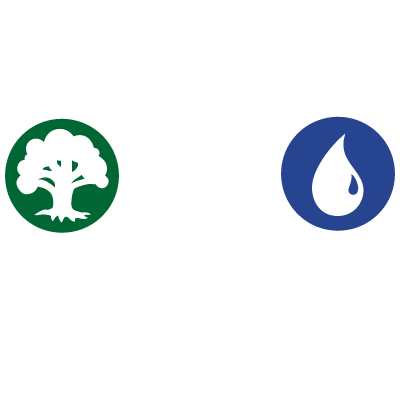
Green believes that each person is born with all the attributes that will define it. That its strengths, weaknesses, everything that will shape who and what the person is comes from within, from its genetic make-up, from its physiology, from its biology.
Blue believes that each creature is born a blank slate that has the potential to become anything. With the proper education, experiences, and tools, each person has the ability to choose their own defining traits, to become the thing that they decide to be.
In short, this is the classic battle of nature versus nurture. What shapes who we are? Are we born with the qualities that will ultimately dictate what we become, or are we something that can be shaped to become whatever we desire? Is our potential fixed or unlimited? Are we defined by our genes or by our environment? Which is more important: the wisdom of our past or the knowledge of our future?
To green, this is an issue of whether or not people are willing to accept themselves for who they were born to be. Green thinks of blue as someone who is unwilling to accept the truth of who they truly are. Green sees this conflict as acceptance versus denial.
To blue, this is an issue of whether or not people are willing to embrace the world of possibility before them. Blue thinks of green as someone unwilling to change. Blue sees this conflict as opportunity versus stagnation.
At its core, this conflict is about identity and how we see ourselves.
Connecting the Dots
One of the most interesting aspects of the conflicts of the color wheel is that each color is fundamentally fighting for the same thing against each of its enemies.
White vs. Black and Red
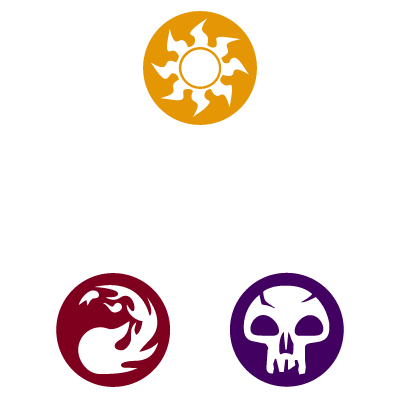
White wants peace. White wants to take steps to maximize the quality of life for every person. Its conflicts are against the two forces that are most likely to stop that: selfishness and recklessness. White has used order as a tool to help society make good choices. It has crafted moral and civil laws. It has created religion and government.
White's conflict with black is about morality. White protects the weak by making people understand that it's their moral responsibility to look after those in need. Black undermines this by questioning whether morality even exists. It preys upon people's selfishness to lure them to only look after their own needs.
White's conflict with red is about civility. White protects the weak by making rules that punish those who take advantage of them. Red undermines this by questioning the need for these laws. It plays into the dislike that people have for being told what to do.
White's conflict is one of upholding structure in the wake of forces that want to tear it down or even prevent it from being created in the first place.
Blue vs. Red and Green
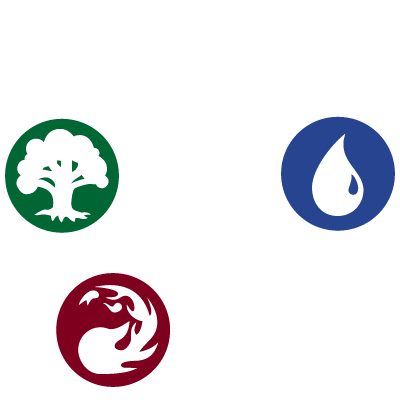
Blue wants perfection. Blue wants to do everything it can to create the best version of itself and its society. Its conflicts are against the two forces that push against that goal: shortsightedness and resistance to change. Blue uses knowledge as a tool to inform individuals of the potential of which they are capable. It supports teaching, training, and the creation of tools that allow people to become something bigger and better. It has created education and technology.
Blue's conflict with red is about restraint. Blue teaches that through careful deliberation and planning, a person can map out their future. Red undermines this by always thinking short term and making spontaneous decisions that are destructive long term. It takes advantage of humans' impulsive nature to seek instant gratification.
Blue's conflict with green is about willingness to change. Blue is on the cutting edge of technology, always using its quest for knowledge to find new answers to life's problems. Green undermines this by questioning the sanctity of change. It takes advantage of human's habitual nature and inherent fear of new things.
Blue's conflict is one of pushing toward slow, deliberate change in the wake of forces that seek to circumvent or stop it.
Black vs. Green and White
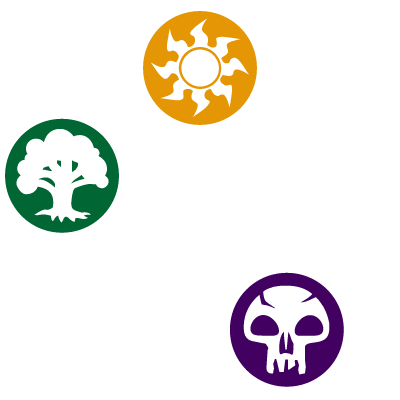
Black wants power. Black believes in personal responsibility and wants to enable each person with the chance to control their own path in life. Its conflicts are against the two forces that want to take away choice from the individual: the false concepts of fate and morality. Black seeks to make opportunities by allowing people to have choices and to earn authority over those choices. It has created the concepts of free will and personal empowerment.
Black's conflict with green is about destiny. Black preaches that each person has control over what they choose to do with their life. Green undermines this by promoting the concept that a person's life is predetermined and that they are obligated to take the path assigned to them. It takes advantage of the natural fear people have with uncertainty and feeds them a promise of a reward that they don't have to earn.
Black's conflict with white is about realism. Black preaches that the one person you can depend upon to support yourself is you. Relying on others makes you vulnerable to disappointment or worse. White undermines this by promoting a concept that states that the strong are obligated to coddle the weak, that people don't deserve more if they work harder. It takes advantage of the fact that the weak outnumber the strong and gives them a false sense of worth.
Black's conflict is one of creating a system that rewards merit in the wake of forces that empower weakness.
Red vs. White and Blue
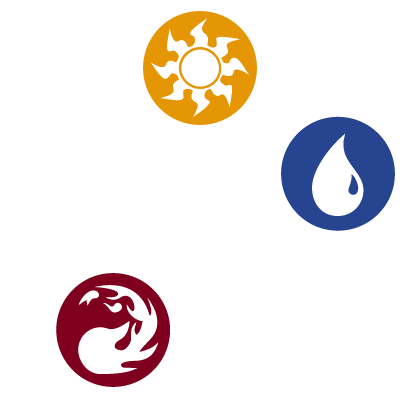
Red wants freedom. Red wants the ability to follow its passions wherever they may lead. Its conflicts are against the two forces that want to put obstacles in its way: caution and impassivity. Red seeks action; it encourages people to follow their impulses. It has created enthusiasm and spontaneity.
Red's conflict with white is about the needless creation of rules. Red understands that there are dangers in life, but none so problematic as a life unlived, of the regret of choices never made. White undermines this by pushing an agenda that prioritizes the safety of the group over the rights of the individual. It takes advantage of the resistance people have to getting hurt.
Red's conflict with blue is about the push toward inaction. Red understands that there are risks arising from unknown factors, but dealing with life's bumps is part of the journey. Blue undermines this by pushing a belief that problems must be fully understood before they're tackled. It takes advantage of human reluctance to making mistakes.
Red's conflict is one of promoting action in the wake of forces that intimidate people into slowing down.
Green vs. Blue and Black
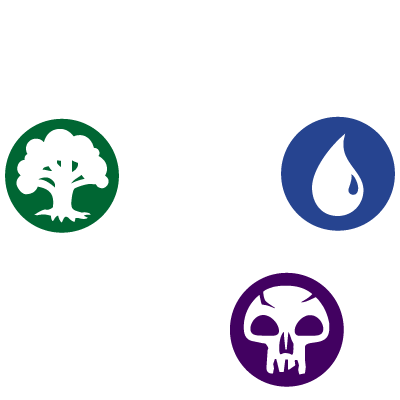
Green wants growth. Green believes that the natural system we have is perfection and it simply wants to enable it to do its thing without outside interference. Its conflicts are the two forces that are trying to create unnatural change: the push to change our identity and to change our fate. Green wants to foster an acceptance for the natural system, to make people realize that we don't need to change to something better, that what we already have is the best system. It has created an appreciation for our internal nature and our destiny.
Green's conflict with blue is about the rejection of genetics, of this erroneous belief that we can change our fundamental nature. Green understands that we are born with the attributes that will define us. Blue undermines this by pushing the belief that people can become something other than who they truly are. It takes advantage of the human desire to dream and imagine ourselves as being fundamentally different from how we were born.
Green's conflict with black is about the rejection of fate. Green understands that the journey of life is coming to understand what role we play in the larger web of life and then embracing that role and fulfilling it. Black undermines this by pushing the belief that people can escape their destiny, that subverting the interconnection between living things will lead to something other than disaster. It takes advantage of the human pull to explore the dark side of nature.
Green's conflict is one of creating acceptance of the world around us in the wake of forces trying to change that world into something it is not.
The Hate and Narrow
One of the things you're taught as you learn creative writing is that fiction is, at its core, about conflict. The protagonist wants something and the antagonist, be it a person, force, or internal conflict, tries to stop the protagonist from getting it. The color pie has a similar quality in that it's balanced by each color's wants and desires being offset by those of its enemies. I hope today's column has demonstrated that the true beauty is not just the isolated philosophies of the five colors but of their relationship with one another.
To boil the conflicts down for a single column, I simplified them a bit. As you explore them, you'll see that any single conflict has many different facets. Two different stories, for instance, could be created with a red vs. white conflict without the stories being similar. (The Dark Knight, for example, is a far cry from Ferris Buehler's Day Off.)
I'm always eager for your feedback, but as the color pie is a passion of mine (my red is showing), I am especially eager to hear your take on what I discussed today. You can drop me an email or talk me through any of my social media accounts (Twitter, Tumblr, Google+, and Instagram) and tell me your thoughts.
Join me next week for another Storm Scale column.
Until then, may your conflicts be as interesting as your philosophies.
"Drive to Work #382—Mirrodin Showdown"
My "Ravnica Showdown" podcast was so popular I've decided to have another one, this time pitting the mechanics of the original Mirrodin block against the mechanics of the Scars of Mirrodin block. Who wins? Check it out and see.
"Drive to Work #383—20 Lessons: Customization"
This is number nine in my 20-part series "20 Lessons, 20 Podcasts" based on my GDC speech. (The three articles I wrote based on this speech can be read here, here, and here.) In this podcast, I talk about why it's so important to let your players have an input into what they're playing.
- Episode 381 Card Concepting (25.0 MB)
- Episode 380 Quick Creative (24.7 MB)
- Episode 379 Replies with Rachel #2 (26.6 MB)

